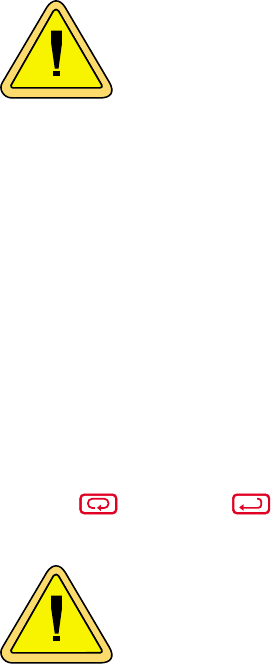
Page 11 of 40
PROGRAMMING SET POINTS FOR ALARM FUNCTIONS
Caution: In any critical application where failure could
cause expensive product loss or endanger personal
safety, a redundant limit controller is required.
The C N74000 Series allows Zone 1 and / or Zone 2 to operate as limit or alarm
type outputs. This function is available on both outputs. To enable a zone
output to act as an alarm or limit,
Out1Out1
Out1Out1
Out1 (for Zone 1) or
Out2Out2
Out2Out2
Out2 (for Zone2) should
be set for
OnOfOnOf
OnOfOnOf
OnOf.
When
Out1Out1
Out1Out1
Out1 and / or
Out2Out2
Out2Out2
Out2 are set to
OnOFOnOF
OnOFOnOF
OnOF, then the alarm function menu items
will appear in the Secure Menu for the selected zone(s).
When Set Point Power Interrupt (
SS
SS
S#
PiPi
PiPi
Pi) is programmed
ONON
ONON
ON and Set Point
Reset (
SS
SS
S#
rErE
rErE
rE) is programmed for
HoldHold
HoldHold
Hold, the alarm will automatically reset
after a power failure and on subsequent power restoration if no alarm
condition is present.
If Set Point Inhibit (
SS
SS
S#
iHiH
iHiH
iH) is selected
ONON
ONON
ON, an alarm condition is suspended
upon power up until the process value passes through the alarm set point
once. Alarm inhibit can be restored as if a power up took place by pressing
both the INDEX and ENTER keys for 5 seconds.
Warning: If inhibit is on and a power failure occurs
during a high alarm, on restoration of power inhibit will
suppress the alarm. Do not use the Set Point Inhibit
feature if a hazard may be created by this action. Be sure
to test all combinations of high and low set point inhibit
actions before placing control into operation.
Menu items that are dedicated to either Zone 1 or Zone 2 will have either
a 1 or 2 in them for identification.
If Edit is set to any value other than 0, the setting will be retained for
a period of five minutes to allow handy, repeated access to that zone's
menues. After five minutes of keypad inactivity, the Edit setting will
revert to 0, giving an added layer of security to prevent inadvertant
changes to the instrument.


















